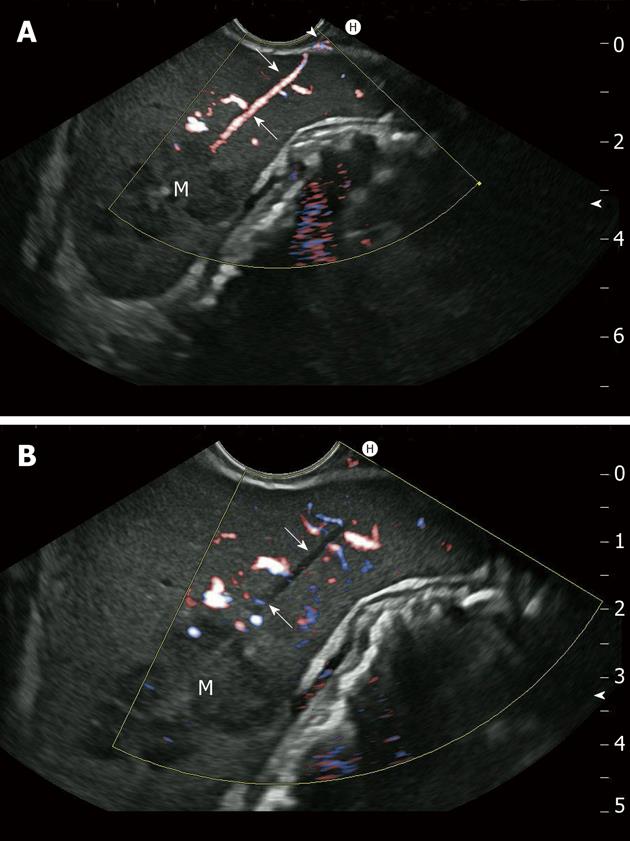Copyright
©2012 Baishideng Publishing Group Co.
World J Gastroenterol. Sep 14, 2012; 18(34): 4659-4676
Published online Sep 14, 2012. doi: 10.3748/wjg.v18.i34.4659
Published online Sep 14, 2012. doi: 10.3748/wjg.v18.i34.4659
Figure 1 Flexibility and rigid tip of echoendoscopes and standard videoendoscopes.
A: Longitudinal video-echoendoscope EG-3870 UTK (left; Pentax Medical/Hitachi Medical Systems; angulation up/down 130/130 degrees) with an approximately 50-mm long rigid tip at the distal end (diameter 12.8 mm). The therapeutic video-duodenoscope ED-3490 TK from the same manufacturer (right; Pentax Medical; distal outer diameter 11.6 mm, angulation up/down 120/90 degrees); B: Radial video-echoendoscope EG-3670 URK (left; Pentax Medical/ Hitachi Medical Systems; angulation up/down 130/60 degrees) with an approximately 50-mm long rigid tip at the distal end (diameter 12.1 mm) and the standard video-gastroscope EG-2990i from the same manufacturer (right: Pentax Medical; distal outer diameter 9.8 mm, angulation up/down 210/120 degrees).
Figure 3 Extraluminal bleeding from needle track following endoscopic ultrasonography-guided fine-needle aspiration.
Hemorrhage occurred immediately after endoscopic ultrasonography-guided fine-needle aspiration (22 Gauge) of a splenic metastasis (M) of gastric cancer. A: Note blood flow within needle track (arrows), which extends beyond the splenic capsule (arrowhead); B: Bleeding ceased spontaneously approximately 3 min later (no detectable flow within the needle track; arrows).
Figure 2 Intraluminal bleeding after endoscopic ultrasonography-guided fine-needle aspiration.
Marked intraluminal bleeding occurred following 19 G endoscopic ultrasonography-guided fine-needle aspiration of a large, hypervascularized gastrointestinal stromal tumor in the stomach. Hemorrhage stopped without intervention.
- Citation: Jenssen C, Alvarez-Sánchez MV, Napoléon B, Faiss S. Diagnostic endoscopic ultrasonography: Assessment of safety and prevention of complications. World J Gastroenterol 2012; 18(34): 4659-4676
- URL: https://www.wjgnet.com/1007-9327/full/v18/i34/4659.htm
- DOI: https://dx.doi.org/10.3748/wjg.v18.i34.4659











